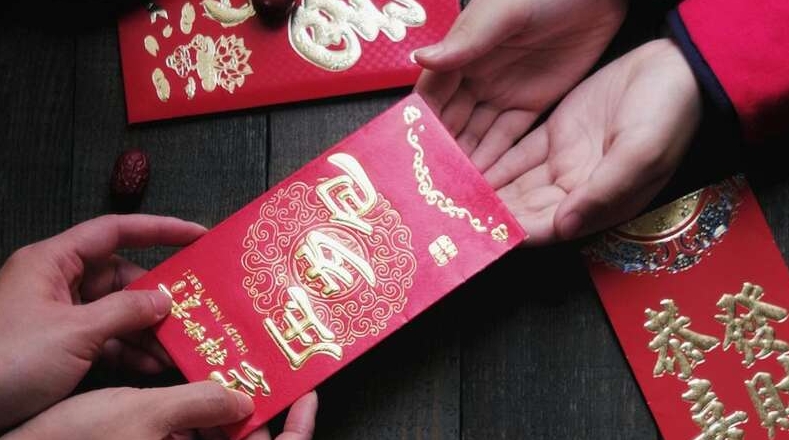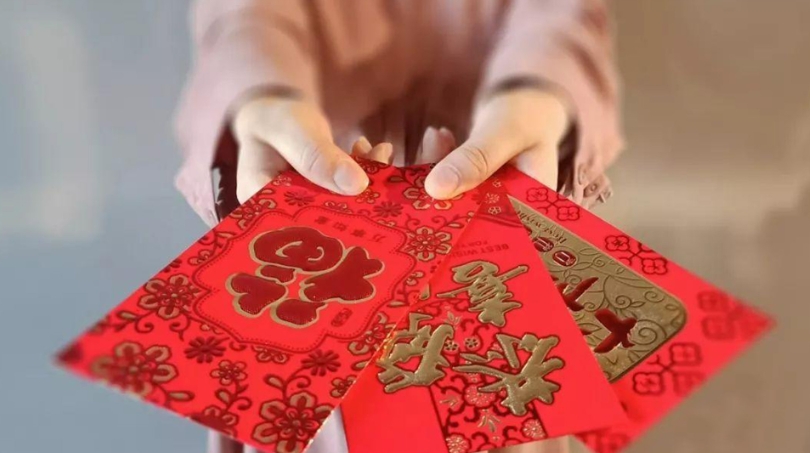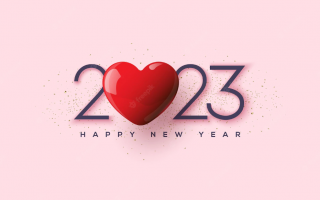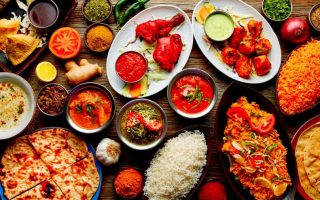Giving money during New Year’s Eve is a tradition most people practice and has been respected since immemorial.
It’s a tradition seen as a good luck charm during the festive season, so people keep it close to their hearts.
But also, every tradition has its way of making New Year’s Eve unique, and in this piece, we will go over everything you need to know about the tradition of money.
History of Money-Related Traditions on New Year’s Eve
About the money for New Year, it is possible to see a long history of business practices from customs changes on this particular day.
Symbolically, sacred plants and funds have been exchanged since ancient Rome.
This custom has now passed to many cultures. From the Lunar New Year money enclosed in traditional red packaging to Wedding gifts and Western festive situations such as Scotland’s first footing, where coins are presented for people on behalf of a promising new year.
Across 500 million funny-eaten fortune cookie years, everyone worldwide has dipped their hands in gold.
Therefore, the nature of imported currency has also gradually evolved to include modern types like paper money or electronic payment forms. Nevertheless, the heart of it is still there — that New Year’s Eve desire to share wealth in hopes of more money and good luck.
Importance of Giving Money on New Year’s Eve
Giving money on New Year’s Eve is a significant tradition carried through over the years.
But to implement this tradition well, you need to understand the significance and when you should do it.
1. Symbolic Prosperity
Giving money becomes a metaphor for human desire, expressing the hope that your good fortune from one New Year is carried over to the next.
This ritualistic inter-change is a concrete manifestation of collective expectations, bridging empire boundaries and accentuating the universal desire for economic well-being.
2. Cultural Traditions and Customs
Giving money is an essential part of New Year’s Eve customs. The custom has become a universal human phenomenon.
Whether the Chinese red envelope with its connotations of good fortune or first footing in which lucky coins and other symbolic items are exchanged as part of a tradition of thanking the gods at New Year’s, these customs link people to their culture. T
These traditions reflect how much treasure is placed in the Chean element (wealth).
3. Warding off Negative Energy
New Year’s gift-giving is part of superstition, and it has received the same protective power as that sought from alters.
As people believe that evil energy can be purged on this night before tranquillity settles in after a year passed ancient times, depositing money or burning paper currency were rituals for acidifying good fortune to come with the holiday season.
But this is more or less a ceremonial act, ensuring you have what it takes for the upcoming year. This mention also plays to the tradition that charity brings good fortune and can ward off calamity from your return to life’s journey each new year.
4. Community and Familial Bonds
In addition to its symbolic and superstitious dimensions, giving money reinforces the ties that bind the community.
A simple financial exchange becomes an expression of concern and encouragement. When the individual uses their wealth to help others, it communicates respect for one another’s well-being and creates an atmosphere of mutual interdependence within society.
5. Setting a Positive Tone for the Future
On the eve of a new year, this money exchange is vital in providing a promising start for the coming year. It’s a visible expression of goodwill and optimism, creating an atmosphere charged with positive energy.
This ritual, in short, becomes a communal manifestation of hope. It announces the beginning of a new era that will bring prosperity and good fortune to all parties concerned.
This money transfer becomes a shared venture- an adventure into the future based on an expectation that giving can help create a more prosperous, hopeful tomorrow.
New Year Money Traditions & Superstitions from Around the World
Numerous traditions in the world will blow your mind. This section will help you figure out these traditions for the better good.
1. Chinese red envelopes (Hongbao)
While Chinese culture has vibrant and culturally important Lunar New Year celebrations, a cherished tradition also occurs around this time every year in which people exchange red envelopes, or Hongbao as they are often called. These gift-laden little packets contain money gifts usually referred to by the two most common types of Hongbao–the kai hong side. This practice, immersed since ancient times, has special symbolism.
The red, prominent to the fore on these envelopes and letters, carries vital cultural and spiritual significance.
Chinese traditions consider red more than a color- this hue represents good luck, prosperity, and positive energy.
Giving red envelopes to people during the New Year isn’t just a show of generosity; it is an act that harks back to tradition, as in times past, such exchanges guaranteed auspicious beginnings.
2. Japanese Otoshidama
Otoshidama is the custom of children receiving money gifts from relatives, which express wishes for prosperity and good fortune in one’s future years.
This gesture is more than just a gift; it embodies people’s cultural belief in the power of numbers.
However, particularly significant is that the amount of money each recipient receives is carefully chosen to include odd numbers.
Odd numbers are a sign of good fortune in Japanese cultural symbolism. Making this reflection on numerology as part of giving Otoshidama adds an extra measure; it suggests a little more intention. You want your new year to be auspicious and harmonious.
3. Scottish First-Footing
The first-footer isn’t a stranger in the enchanting Scottish New Year’s Eve tradition, appearing as the personification of the spirits accompanying prosperity into households when midnight strikes.
This peculiar customary practice endows importance and emphasis on who the first visitor steps through the door of a home in the New Year.
Such an early arrival, known as ‘the first footer,’ usually carries with them not only warm wishes for this new year but also gifts symbolic of that auspicious occasion. Among these gifts, coins are significant because they signify financial success and good fortune.
There is no mere symbolism in this bestowing of cash on the household. Such gifts are profoundly grounded in the widespread belief that they will bring economic well-being during the coming year.
4. Spanish Grapes
On every Spanish New Year’s Eve, among the dazzling array of festivities that abound everywhere in Spain, there is a significant tradition joined by many. Just before midnight, they eat 12 grapes for luck.
The symbolic depth of each grape is extra deep: Good luck every month in the coming year. The Twelve Grapes of Luck is not merely a dining habit but an entwined tradition.
One eats the grapes along with all that they symbolize–the history behind them long predates the Spanish conquest, and their wish for prosperity dates far back from this particular countdown toward New Year.
The precision of the time is itself eclipsed by the precise synchronization ushering in each grape eaten one chime after another. This gives a sense of anticipation and shared excitement to this ritual-eating event, making it an act and theatre.
5. Italian Lentils
The cultural melting pot of Italian New Year’s Eve celebrations produces one particular culinary tradition. Families join together to eat lentils as symbols of good fortune for the coming year, outside on the balcony and at dinner tables.
As a cultural shape, the round lentil gives rise to more than just eating pleasure. Lentils are usually seen as coins; each has a long story. They bring wealth and good fortune for the upcoming year.
The custom of having lentils as part of the New Year’s Eve dinner grows, linking life and abundance together in one bond.
When families accept this tradition, they get the opportunity to enjoy a tasty dish while performing symbolic action reinforcing cultural values associated with good fortune and health.
6. Filipino Coins in Pockets
The tradition of welcoming New Year’s is an archipelago weaved through the Philippines and has become a part of both culture and people.
At midnight, the island people perform a touching ritual: everyone stuffs his pockets with coins and coppers, many enough for fortune.
It’s no idle superstition but rather a deeply held belief that when the cash in your purse uproars, it heralds abundant money pouring into your pocket.
Thus, typical in daily life, with its obsession with prosperity and stability, pocketing some coins is symbolic.
7. Danish Broken Dishes
They are unnecessary, yet they make up an unlikely collection for one unique purpose when winter comes along.
On the eve of the New Year, dishes are clattering on streets as friends and neighbors get into a bit of fun by dragging out broken crocks to deck themselves, clothe their sleeves, plasters in hair-or just break up what morsels they can at doorways of families whom they love.
By no means is this a mischievous tradition. In actuality, the more broken dishes one gets on New Year’s Eve- the start of Eclipse Day, if you will- as fate would have it, the more popular and fortunate they are to be in that coming year.

8. Panamanian Effigy Burning
From Panama with love During Panama’s rich and colorful New Year customs, there is a charming Christmas tradition that has even the natives and immigrants charmed.
This tradition also requires the making of puppets, called muñecos in Spanish. They are painstakingly hand-made one by one to represent people or occurrences from the past year that have made an impression on the persons involved.
But with the year gradually winding down, communities make these symbolic representations and attempt to imprint a little creativity on them.
This tradition climaxes on New Year’s Eve when the muñecos (standing for old-year spirit) are thrown in a burning fire.
9. Russian Money in Champagne
Their sound links the treelike wooden wine glasses and their meaning with empty, tinkling champagne glasses.
Such is a unique tradition on Russian New Year celebration night that resounds through hickory forests in many wedding cards of the olden days.
At the stroke of midnight, participants become involved in a curious practice: tossing a coin in their flute of champagne.
It is not ceremonial. With tinges of hope and elements of superstition, it melts together everyone’s great expectations for the coming year into one strand. So when people clink their glasses to raise a toast for the arrival of 2017, they are not merely emptily pouring some grape juice down with their gaze; each person is offering up this year’s hopes and wishes that things be better in our world.
Tension mounts as glasses clink, and the festive mood shakes with anticipation. Then, in the middle of all those bubbles, someone finds a coin, and everyone says that whoever finds it will have good luck for an entire year.
10. Brazilian Jumping Over Seven Waves
One particular tradition takes center stage in the kaleidoscope of Brazilian New Year’s Eve traditions along the coastline, where people dive into a pool with infant frogs and then put them back holding their arms.
By its daybreak, coastal residents have taken part in another tradition dating back centuries: jumping over seven ocean waves. Each leap was paired with the making of seven wishes for the next year to come.
This Pular tradition is more than an exercise activity, though. It symbolizes the road into a new year and becoming one with it; as such, with waves crashing beat-to-beat like hands of clocks moving through time past to the present day in its sightsmanship, you can feel like going out from 1960 or even earlier toward nineteen hundred seventy.
Seven signifies an auspicious beginning, resonating across the cultural imagery of fortune.
11. Romanian Bear Dance
New Year’s is a scene out of the cultural landscape as fascinating as it sounds, ritual and religion square off in Romania with their accompanying big event participatory celebrations.
These two unique rituals have people wearing resplendent bear-like outfits, in spirit becoming bears themselves and dancing the freedom dance.
The main reason is that this odd specter-like drama is meant to scare away evil spirits, a practice so deeply rooted in China’s national subconscious. Instead, the bear is now seen in
Chinese eyes as a bold friend who throws away evil spirits on his midnight New Year’s debut while bringing hope for new life and good fortune into the following year.
To these people, he has become an indispensable symbol of power and protection in both realms–in one sense to ward off danger with ridges mimicking their frames, another to
12. Greek Vasilopita
Specifically, to begin with, the mouth-watering traditions celebrated on New Year’s Day in many Greek communities worldwide: amidst their endearingly warm customs, a unique cooking ritual that involves families and community together dominates the center stage. The essence of this festive tradition lies in baking a special bread called Vasilopita and giving it away. Cultural Connotations Oiled up Baked full of hopes and aspirations.
This bread is heavy with culture. A full Vasilopita is a game of chance. How many have joined the race? Turning act into pleasure, place boon the treasure in.
As the families enter the gathering, excitement grows with each cut. Heard are gasps and exclamations of joy: Whoever finds that hidden coin will enjoy good fortune all year round. The hunter described in this piece is a 56-year-old woman at Girolame Restaurant.
13. Ecuadorian Año Viejo
This Ecuadorian New Year tradition is unique, called Año Viejo. Today, puppets represent the old year, carefully created to depict heads of important figures or events through the former twelve months.
As the clock strikes midnight, effigies of these evils are ignited in a blaze of color, representing the burning away of the old and opening doors to new possibilities. This isn’t just up to individuals but brings everyone together.
It signifies not only a collective desire for more hope and prosperity on the part of Ecuadorians as they approach this New Year (again with it occurring at least five times) but also one purifying slate wiped clean, ready for some new start.
14. Indian Gold and Silver Buying
Dhanteras, the festival ritually accompanying the start of a new year in India, is traditionally followed by buying gold or silver.
This age-old tradition stems from the conviction that if precious metals are acquired during this time, prosperity and wealth will come into the home.
Apart from the physical gesture of buying gold and silver during Dhanteras, it symbolizes re-investment in a future with wealth and abundance.
This may explain why, despite economic slowdowns over the years, sales figures for significant manufacturers have continued to grow progressively higher each year at this time.
15. Turkish Pomegranate Breaking
Turkish households have a New Year’s Eve tradition that involves breaking open the flesh of a pomegranate at midnight to symbolize its seeds raining down on all good and bad things. Indeed, the seeds that fell are considered potent symbols of prosperity and good fortune for those coming.
Do not take this act just as a bunch of rationing. The pomegranate’s significance could have been brought forth to express the communal wish for abundance and positive energy rather than simply telling people how many seeds there would be that day or what was happening with their bellies.
16. Dutch Doughnut Consumption
Though oil-drenched doughnuts smothered in powder sugar, known as oliebollen, have an intrinsic appeal to Western stomachs, traditionally, they were eaten on New Year’s Eve to bring good fortune and keep evil spirits at bay.
In the Netherlands, such a custom has vanished now that people take down Christmas decorations right after worship.
The Dutch tradition of eating only round foods during the New Year’s festivities is one example that expresses humanity’s international credulousness for associating spherical items with wealth and fortune, adding a floristic and Chinese touch to these happy days.
17. Peruvian Yellow Underwear
The choice of underwear for New Year’s Eve night in Peru becomes special as people wear yellow. Yellow has long been considered an auspicious color, and wearing yellow underwear is thought to bring good luck.
Since one wears one’s inner garments closest to the body, they should contain as many positive vibes or attributes from nature to their owners as possible. Is anyone listening? Care, thus, comes naturally for someone living on top of three foods: grain, Here, we see the South American style, with its bold use of expressive symbolism.
On the one hand, it implies that you choose your clothes based on New Year wishes for yourself, so fashion is brought together with bestowing blessings upon oneself and others at this time of year (for example, through wearing red to indicate good fortune).
18. Honduran Media Noche Customs
In Honduras, midnight on New Year’s Eve strikes a humorous chord. With the ringing in of another year at twelve, similar scenes unfold throughout all and sundry proportions athwart town streets accompanied by suspicious rituals befitting prosperity.
This ensures fortune upon plow implements indifferent people waving about crash contractors believed guilty money burning doctors clearing out the homes, inside and outside.
Thorough sweeping is a symbolic activity thought to rid one’s life of negativity at year’s end for purposes of purity in starting afresh from scratch next year.
Also, money being put into shoes is another layer of pouring in wishes for sound finances. It combines practical and symbolic gestures to ensure a good return at the start of each new year.
19. Vietnamese Tet Lucky Money
A cherished tradition during the Vietnamese New Year falls around Tet. Elders give red envelopes filled with subs to children. My uncle (a chorizo) is responsible for it, along with the money.
Apart from that cash gift, this custom expresses our good wishes and blessings to young people; these small tokens create a warm climate between households: they stretch ties over generations into neighbors’.
Red envelopes change hands, becoming an expressive gesture of intergenerational companionship and solidarity. It is a hope that the coming year will be prosperous. Harry Yu Yin-cher Brian Liu
20. Mexican Año Nuevo Rituals
In Mexico, the arrival of the New Year is celebrated through various colorful rituals. I ate 12 grapes at midnight, one for each month of the coming year, and injected superstition and culinary delight into the moment.
Moreover, carrying luggage around the block signifies a wish for an adventurous year filled with travel. Tossing coins among people walking by symbolizes turning the tables for financial prosperity, creating a vibrant scene woven from different threads representing hope and tradition on this festive day.
The coming together of these rituals woven into a rich and diverse tapestry is one example from the Mexican New Year, full to bursting with symbolism and tradition as people now express their collective hopes for the year ahead.
Conclusion
Whether it be the symbolic effigy burnings in Ecuador or promising gold and silver buying of India, each tradition has a particular cultural meaning, whether involving objects set ablaze like bonfires soaring into unity with the stars (Ecuador) to pendants depicting deities embodying all-growth energy found within water.
This reveals a humanity common to everyone throughout this material world, seeking happy new beginnings and collective prosperity.
Worldwide, people observe these rituals, not only repaying the past but they can, wherever possible, in a thousand different ways. Feelings of hope cross borders as well.



